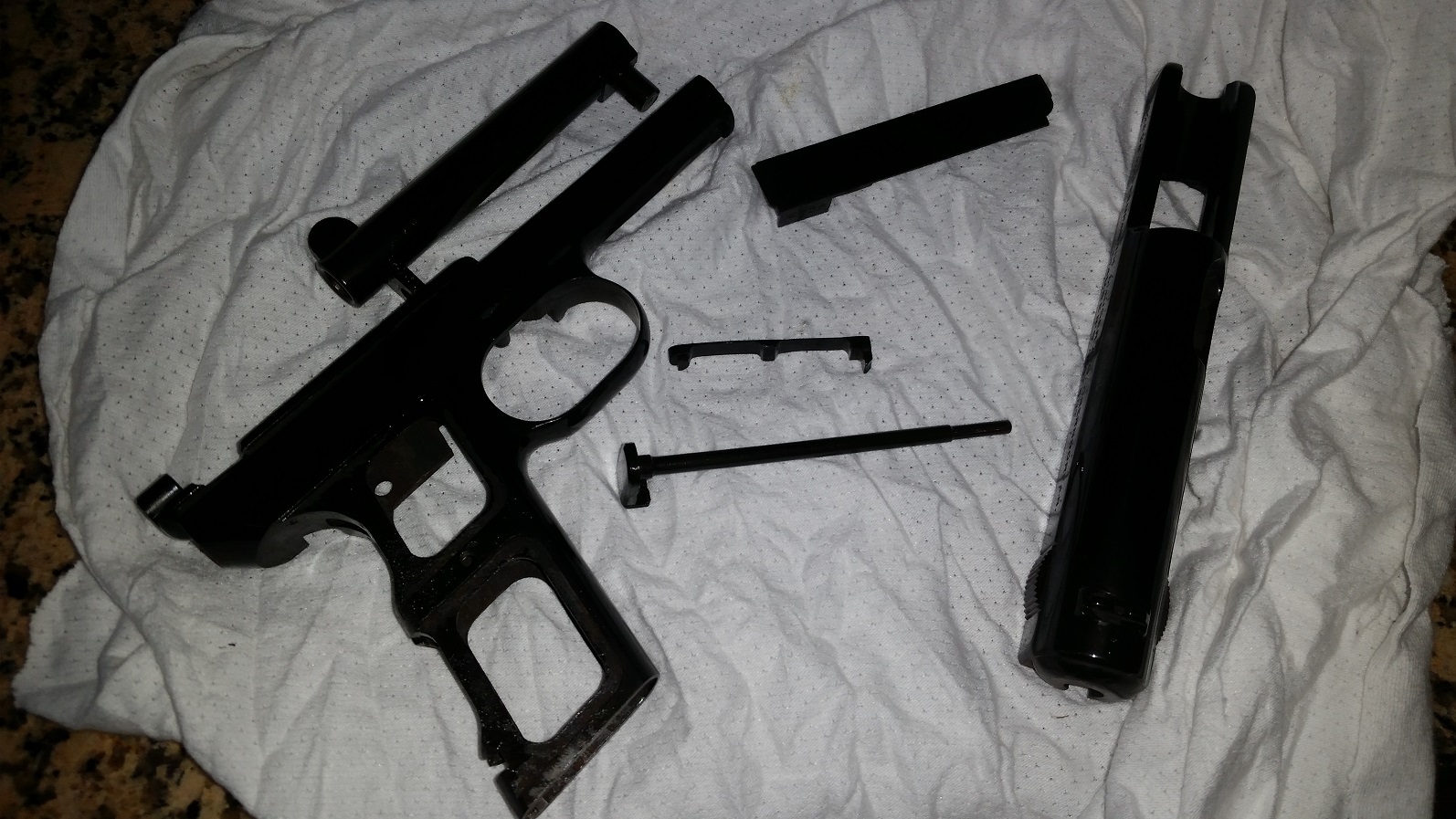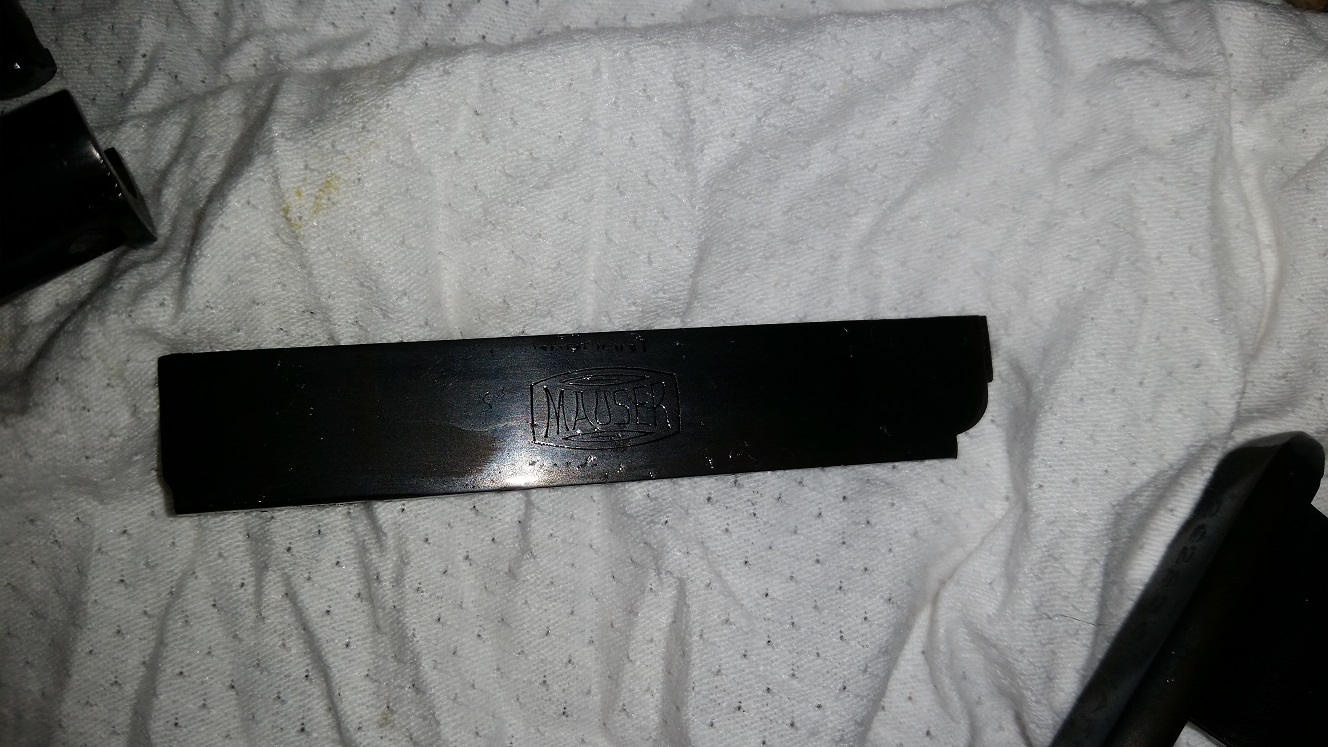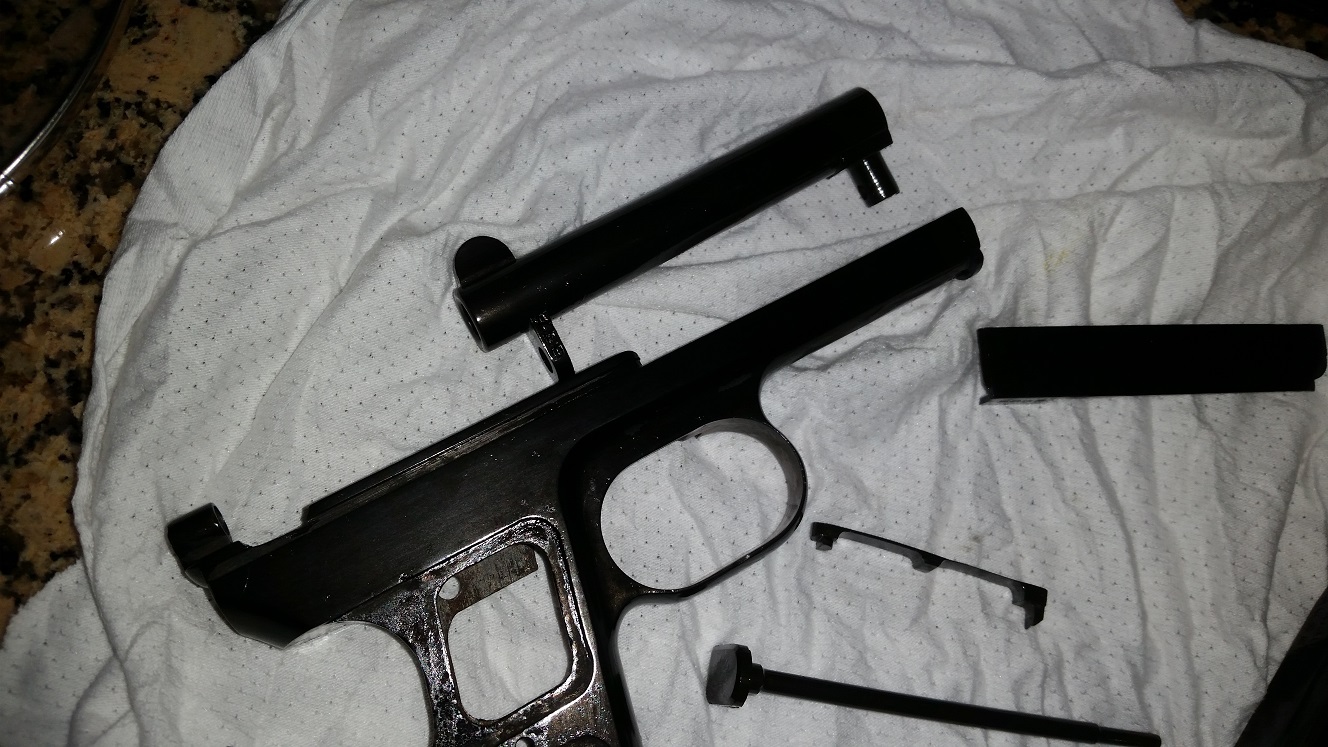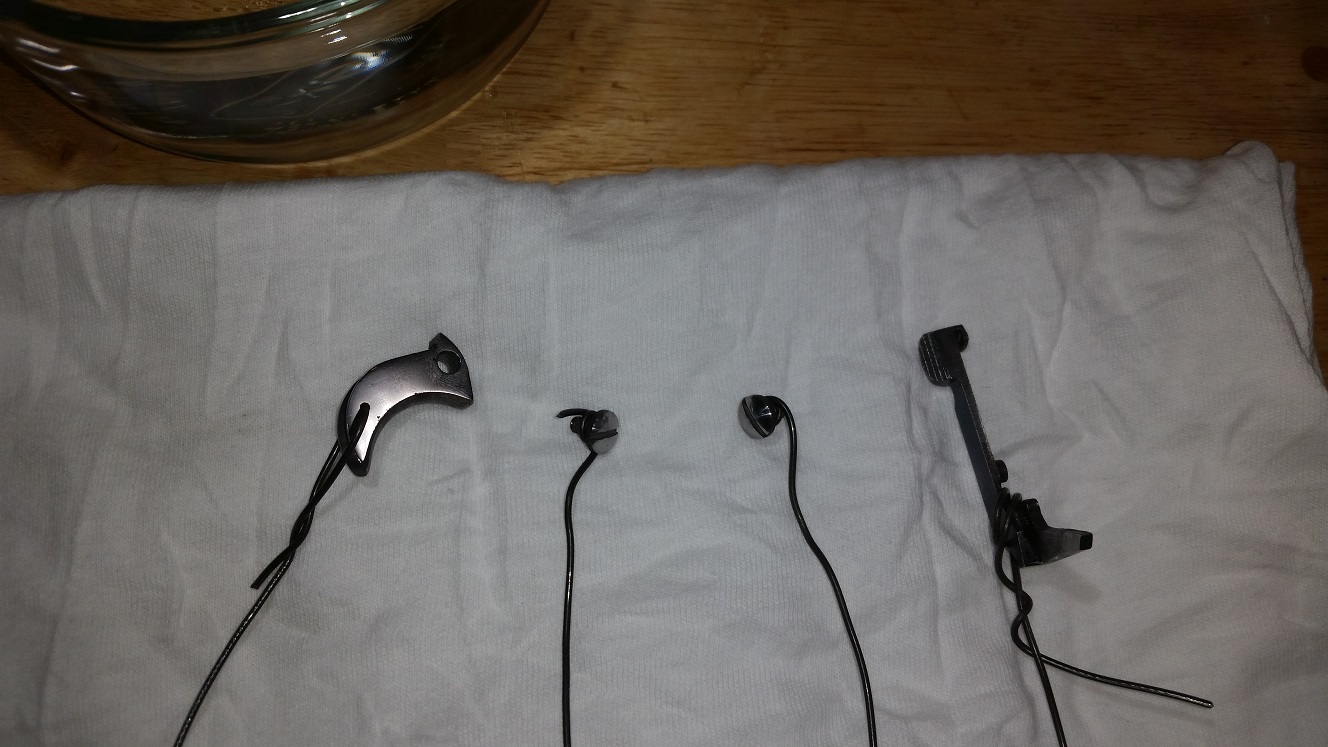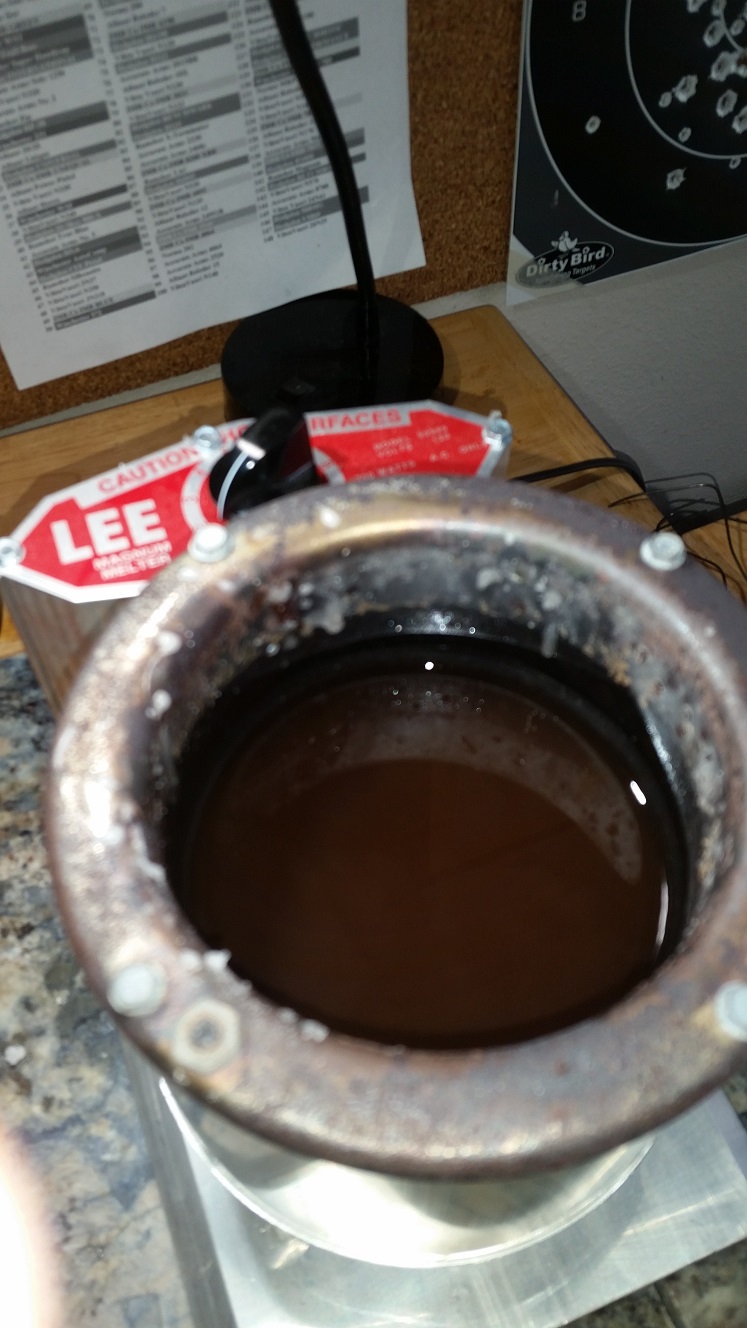Post by AFJuvat on Jun 4th, 2019 at 3:40pm
Rust bluing is fairly easy. I heat the parts to 200 degrees and apply a light coat of the rust bluing solution. Once the parts have a light coat of rust, they are boiled in distilled water, which converts the red rust to magnetite, which had a blue/ black color.
Pictures 1 - 3 are the parts after rust bluing the gun.
After bluing was complete, the parts were stored in a container full of oil until I was ready to put the gun back together.
On the original 1914 pistols, the trigger and all 'non-structural' parts were nitre blued. This makes sense, as hot salt bluing was not commonly used at the time, and rust bluing does take a fair amount of time. Nitre bluing gives the parts a thin oxide coating quickly. Unfortunately, nitre blue is not at all durable, and will wear off quickly if not protected.
Picture 4 shows the trigger, grip screws, and safety lever polished and mounted on wire prior to nitre bluing.
Picture 5 is my lead melter filled with molten potassium nitrate, which melts at approximately 620 degrees.
The peacock blue color we are shooting for comes on between 570 - 590 degrees depending on the alloy. The parts are dipped in the molten salt and watched closely for the color change. Once the desired color is reached, the parts are taken out of the salt and dipped into water to cool them.
Next Post.
 1914Blued1.jpg ( 464 KB | 0
Downloads )
1914Blued1.jpg ( 464 KB | 0
Downloads )
 1914Blued3.jpg ( 321 KB | 0
Downloads )
1914Blued3.jpg ( 321 KB | 0
Downloads )
 1914Blued4.jpg ( 341 KB | 0
Downloads )
1914Blued4.jpg ( 341 KB | 0
Downloads )
 1914_Parts_Ready.jpg ( 274 KB | 0
Downloads )
1914_Parts_Ready.jpg ( 274 KB | 0
Downloads )
 1914_Molten_Salt_2.jpg ( 243 KB | 0
Downloads )
1914_Molten_Salt_2.jpg ( 243 KB | 0
Downloads )
Pictures 1 - 3 are the parts after rust bluing the gun.
After bluing was complete, the parts were stored in a container full of oil until I was ready to put the gun back together.
On the original 1914 pistols, the trigger and all 'non-structural' parts were nitre blued. This makes sense, as hot salt bluing was not commonly used at the time, and rust bluing does take a fair amount of time. Nitre bluing gives the parts a thin oxide coating quickly. Unfortunately, nitre blue is not at all durable, and will wear off quickly if not protected.
Picture 4 shows the trigger, grip screws, and safety lever polished and mounted on wire prior to nitre bluing.
Picture 5 is my lead melter filled with molten potassium nitrate, which melts at approximately 620 degrees.
The peacock blue color we are shooting for comes on between 570 - 590 degrees depending on the alloy. The parts are dipped in the molten salt and watched closely for the color change. Once the desired color is reached, the parts are taken out of the salt and dipped into water to cool them.
Next Post.
 1914Blued1.jpg ( 464 KB | 0
Downloads )
1914Blued1.jpg ( 464 KB | 0
Downloads ) 1914Blued3.jpg ( 321 KB | 0
Downloads )
1914Blued3.jpg ( 321 KB | 0
Downloads ) 1914Blued4.jpg ( 341 KB | 0
Downloads )
1914Blued4.jpg ( 341 KB | 0
Downloads ) 1914_Parts_Ready.jpg ( 274 KB | 0
Downloads )
1914_Parts_Ready.jpg ( 274 KB | 0
Downloads ) 1914_Molten_Salt_2.jpg ( 243 KB | 0
Downloads )
1914_Molten_Salt_2.jpg ( 243 KB | 0
Downloads )